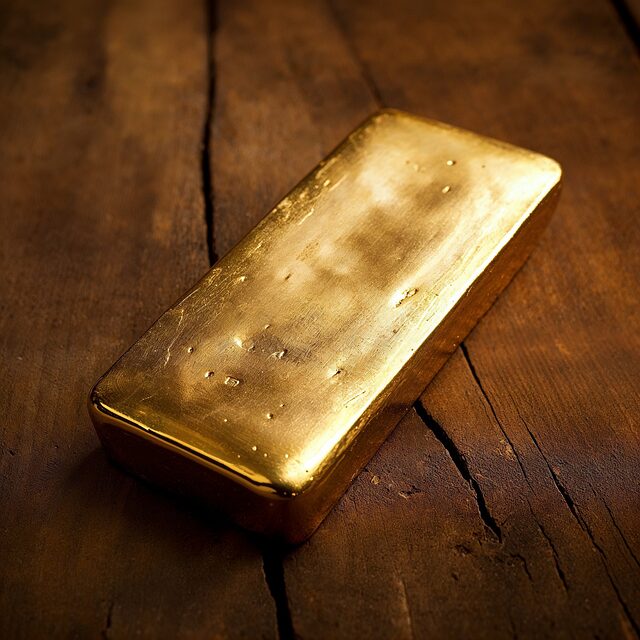To incorporate gold into a retirement portfolio through an Individual Retirement Account (IRA), investors must set up a self-directed IRA that allows for precious metals investments. This involves engaging a custodian who adheres to IRS regulations for gold IRAs, ensuring that only IRS-approved gold products like American Gold Eagles and Canadian Gold Maple Leafs are included due to their high purity standards. Investors must follow specific rules, including storage requirements and prohibitions on personal possession of the gold. A rollover process from an existing IRA is necessary to fund this new account, with careful attention to the 60-day timeframe for purchasing eligible gold products. Throughout the transition, investors should consult with financial advisors and precious metals dealers experienced in IRA transactions to navigate legalities and ensure a secure investment. When choosing between gold bullion and numismatic coins, investors must consider both liquidity and regulatory compliance, as not all gold items are permissible within an IRA. The process requires working with a trustee knowledgeable in precious metals regulations and fineness requirements to maintain IRS compliance and protect the tax advantages of the investment.
Exploring the transformation of a traditional IRA into a gold-backed investment, our article delves into the intricacies of self-directed IRAs, offering a golden opportunity for diversifying your retirement portfolio. We guide you through the alchemy of regulatory compliance and selection processes, ensuring your journey from paper wealth to tangible gold is both informed and compliant. From setting up a self-directed IRA conducive to precious metals to selecting the optimal form of gold for your financial future, we cover every step necessary for this unique investment strategy. Understanding the market dynamics and legal frameworks governing gold IRAs is crucial, as it opens a vault of security and potential growth within your retirement savings.
- Understanding Self-Directed IRAs for Gold Investments
- Steps to Convert Traditional IRA to Gold
- Choosing a Trustee Specializing in Precious Metals
- Selecting the Right Type of Gold for Your IRA
- Compliance and Regulations Governing Gold IRAs
Understanding Self-Directed IRAs for Gold Investments

Navigating the transition of traditional Individual Retirement Accounts (IRAs) to investments in gold involves establishing a self-directed IRA. These specialized accounts afford investors the opportunity to diversify their retirement portfolios with physical gold, coins, and bullion. Unlike conventional IRAs managed by financial institutions, self-directed IRAs are governed by the account holder, allowing for a broader range of investment options beyond stocks, bonds, and mutual funds.
To initiate this process, one must select a custodian that specializes in self-directed IRAs and is compliant with Internal Revenue Service (IRS) regulations regarding IRA investments in precious metals. These custodians oversee the transaction, ensuring that all investments adhere to the IRS’s strict guidelines for IRA assets. The selected custodian will facilitate the purchase of approved gold products, which typically include American Gold Eagles, Canadian Gold Maple Leafs, and other comparable bullion coins or bars, in accordance with the IRS’s purity standards. Investors should be aware of the specific requirements for gold investments within their self-directed IRA, including storage guidelines and prohibitions on taking personal possession of the invested gold until reaching the age of withdrawal without penalty. Understanding these aspects is crucial for a compliant and beneficial investment in gold through a self-directed IRA.
Steps to Convert Traditional IRA to Gold

To convert a traditional Individual Retirement Account (IRA) to gold, you must initiate a rollover process that transfer funds from your existing IRA to a self-directed IRA that permits investment in precious metals. The first step involves selecting a trustee or custodian that specializes in self-directed IRAs and is approved for holding physical gold. Once you have established an account with such a trustee, you will need to identify the type of gold allowed under IRS regulations—typically, this includes American Eagle bullion coins, American Buffalo bullion coins, certain Gold Canadian Maple Leaf coins, certain Austrian Philharmonic coins, and certain Chinese Panda coins, among others.
After selecting the appropriate gold products, you must effectuate a rollover to transfer funds from your traditional IRA to your new self-directed IRA. This can be done by having the original IRA custodian directly transfer the funds to the new trustee or by having the funds distributed to you, though the latter option requires careful handling to ensure compliance with IRS rules and to avoid taxes and penalties. The received funds must then be used to purchase the approved gold within 60 days of the rollover. It is crucial to work closely with both your financial advisor and a precious metals dealer familiar with IRA regulations to ensure the transaction adheres to all legal requirements and to securely acquire the chosen gold for your retirement portfolio.
Choosing a Trustee Specializing in Precious Metals

When considering the conversion of an IRA to gold or other precious metals, selecting a trustee with expertise in these types of investments is paramount. A trustee specializing in precious metals brings a distinct advantage to this process, as they are well-versed in the intricacies and regulations governing such assets within retirement accounts. These professionals ensure that the precious metals meet the specific fineness requirements set forth by the Internal Revenue Service (IRS). They also guide account holders through the due diligence required to validate the authenticity and purity of the metals, avoiding any penalties or disqualification from IRA regulations. Their expertise is invaluable in navigating the setup and maintenance of a self-directed IRA that holds precious metals, ensuring compliance with all legal frameworks while facilitating diversification of your retirement portfolio.
The choice of trustee is not a decision to be taken lightly, as it directly impacts the security and integrity of your investment. A specialized trustee will have established relationships with reputable precious metals dealers, which can streamline the purchasing process and provide access to competitive pricing and a wide selection of eligible metals. Additionally, they offer ongoing management and administrative services tailored to precious metal IRAs, ensuring that your investment remains compliant and aligned with your retirement goals. Their guidance is crucial in this niche market, offering peace of mind for investors looking to include physical gold, silver, platinum, or palladium in their retirement savings strategy.
Selecting the Right Type of Gold for Your IRA

When considering the conversion of a traditional IRA to one that allows for gold investments, it’s crucial to select the appropriate type of gold that aligns with your investment goals and the rules governing self-directed IRAs. Among the options available, investors typically have the choice between different forms of gold bullion, such as coins and bars, and numismatic or collectible coins. For those seeking a more conventional investment, standard gold bullion coins or bars, like the American Gold Eagle or the Gold Buffalo, are often preferred due to their higher liquidity and lower premiums over the spot price of gold. These investments are typically easier to buy and sell within the IRA framework.
On the other hand, numismatic or collectible coins can be attractive for investors interested in rarer pieces that may appreciate at a faster rate than standard bullion products. However, these coins can come with higher premiums and may be subject to greater price volatility. It’s essential to conduct thorough research on the specific gold type you’re considering, as not all gold coins or bars are IRS-approved for IRA investments. Consulting with a trusted financial advisor or a specialist in precious metals IRA accounts can provide valuable guidance in making an informed decision that aligns with your investment strategy and the regulatory requirements of your self-directed IRA.
Compliance and Regulations Governing Gold IRAs

When considering the conversion of a traditional IRA to a gold IRA, it is imperative to understand the intricate compliance and regulatory framework that governs such investments. The Internal Revenue Service (IRS) provides specific guidelines that dictate the types of precious metals eligible for purchase within a self-directed IRA. These regulations mandate that the gold must be of a certain fineness or purity, typically 24 karat and 99.9% pure gold, to qualify as an investment for retirement savings. The Internal Revenue Code (IRC) Section 408(m) outlines what are known as “collectible” coins, which are explicitly disallowed within these accounts. This includes any coin with collectible value as opposed to its intrinsic metal value, such as American Gold Eagles, while other bullion coins and bars manufactured by recognized refiners meet the standards for inclusion in an IRA.
Furthermore, investors must engage with custodians or trustees who specialize in self-directed IRAs and are approved by the IRS to hold physical precious metals. These custodians ensure that all transactions comply with the Employee Retirement Income Security Act (ERISA) regulations and that the storage and handling of the gold adhere to stringent security protocols. The custodian is responsible for the safekeeping of the investments until the account holder reaches retirement age and begins to draw from their IRA. Adherence to these compliance and regulatory measures is crucial for maintaining the tax advantages associated with IRA investments and for protecting the investor’s capital.
In conclusion, transitioning a traditional IRA into an investment vehicle comprised of gold requires careful consideration and adherence to specific guidelines within the realm of self-directed IRAs. By selecting a trustee knowledgeable in precious metals, determining the appropriate gold form for your portfolio, and ensuring compliance with regulatory standards, you can effectively incorporate physical gold into your retirement savings strategy. This process not only diversifies your assets but also provides a tangible investment that may serve as a hedge against inflation and market volatility. With due diligence and the right guidance, incorporating gold into your self-directed IRA can be a strategic move for securing financial stability in retirement.
